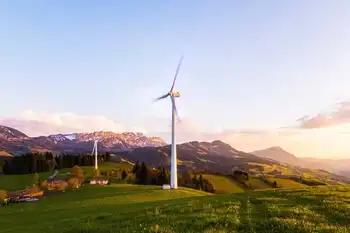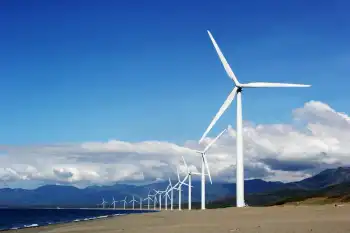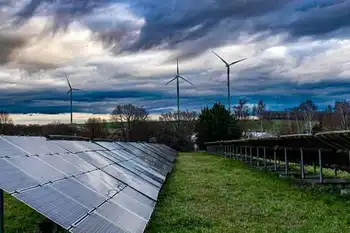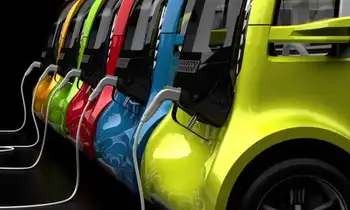UK electric car inquiries soar during fuel supply crisis

NFPA 70e Training - Arc Flash
Our customized live online or in‑person group training can be delivered to your staff at your location.

- Live Online
- 6 hours Instructor-led
- Group Training Available
UK Petrol Shortages Drive EV Adoption as fuel crisis spurs electric vehicles, plug-in car demand, home charging, lower running costs, zero-emission mobility, ULEZ compliance, accelerating the shift from diesel to battery EVs.
Key Points
Fuel shortages push drivers to EVs, boosting inquiries and sales while highlighting the convenience of home charging.
✅ Surge in EV dealer inquiries and test drives
✅ Home charging avoids queues and fuel shortages
✅ Policy signals: ULEZ expansion, 2030 ICE ban
Sellers of plug-in vehicles say petrol shortages are driving people to adopt the new technology as the age of electric cars accelerates worldwide.
As petrol stations in parts of the UK started running out of fuel on Friday, business at Martin Miller’s electric car dealership in Guildford, Surrey, started soaring.
After what ended up being his company EV Experts busiest day ever, interest does not appear to be dying down. This week the diary is booked up with test drives and the business is low on stock amid supply constraints.
“People buy electric cars for environmental reasons, for cost-saving reasons and because the technology’s great, even though higher upfront prices remain a concern,” he said. “But Friday was one of those moments where people said, ‘Do you know what, this is a sign that we need to go electric’.”
While scenes of chaos play out at petrol stations across the country amid shortages, for many electric vehicle (EV) dealers the fuel crisis has led to an unexpected surge in inquiries and sales, even as some question an electric-car revolution narrative today.
EVA England, a non-profit representing new and prospective EV drivers, reports a rise in electric car inquiries and in interest at EV dealers, particularly in the last week.
“Saturday was bonkers but Friday even surpassed that, it was very strange,” said Miller, who founded his company four years ago. “I’ve now got trade-in cars with no petrol to move them.”
Along with existing factors such as the expansion of London’s ultra-low emission zone, the fuel crisis has proved to be another trigger point, he said. “People were using it as ‘this is the moment where I’m not going to put this off any longer’.”
The EV market is no longer the preserve of innovators and early adopters, he said, with the most popular models the Nissan Leaf, Volkswagen ID 3 and Jaguar I-Pace.
Ben Strzalko, the owner of Electric Cars UK in Leyland, Lancashire, said that as a small business it would take a few months to feel the knock-on effect of the fuel crisis on sales.
But every time there are problems with petrol or diesel, he said they acted as “one more tick for people making that transition to electric cars”.
He said “a lot of electric car owners will be chuffed to bits this last week” being able to plug in their cars at home. And as an EV driver himself, he admitted feeling a little smug as he drove past queues of 20 cars outside petrol stations over the weekend in his Tesla.
Matt Cleevely, the owner of Cleevely Electric Vehicles in Cheltenham, Gloucestershire, which specialises in used EVs, had a surge of inquiries over the weekend and on Monday morning from customers citing the fuel crisis as a reason for switching to electric.
He expects enthusiasm to continue rising, with petrol shortages adding “fuel to the fire”.
Although he feels sorry for non-EV drivers who have been unable to get fuel, he said as an electric car owner it was “very nice” not to have to worry about where to get petrol at the weekend.
“It’s very convenient that we’ve been able to just fuel up on our driveway. It’s one of the biggest pros of having an electric vehicle.”
The National Franchised Dealers Association also said multiple dealers have reported a spike in EV enquiries since the start of the crisis.
The Society of Motor Manufacturers and Traders reported “bumper growth” in the sale of plug-in cars in July, reflecting broader global market growth in recent years, with battery electric vehicles comprising 9% of sales. Plug-in hybrids accounted for 8% of sales and hybrid electric vehicles nearly 12%. Also in July, more electric vehicles were registered than diesel for the second consecutive month.
The UK has pledged to ban the sale of new petrol and diesel cars by 2030 and of new hybrids by 2035, a timeline that aligns with expectations that within a decade most driving could be electric.
Warren Philips, the volunteer communities director at EVA England, said the tipping point for EVs had already been reached but the fuel crisis “underlines how electric cars could work for the majority of people”.
He added: “The interest is already there, this just adds to it. And going forward with things like Cop26, with the climate crisis, with the cost of fuel probably going to rise … people will start looking at electric cars where you just skip that entire step.”















